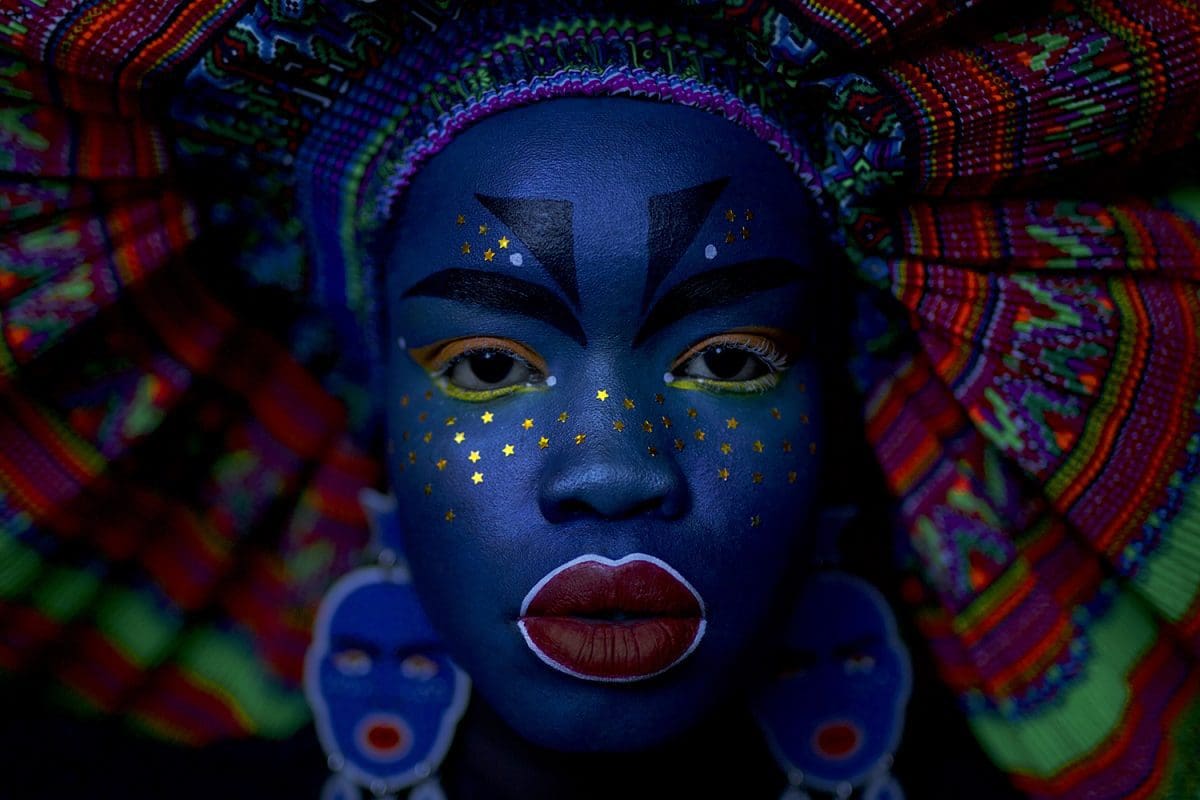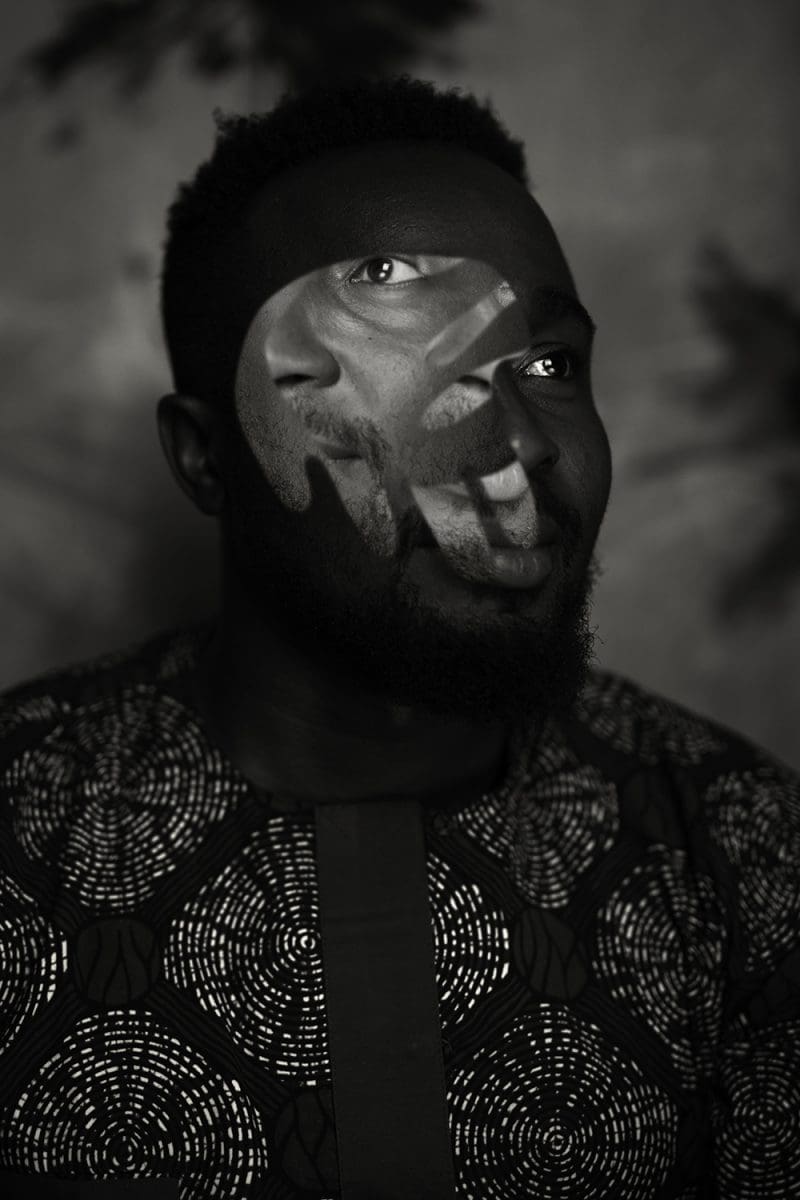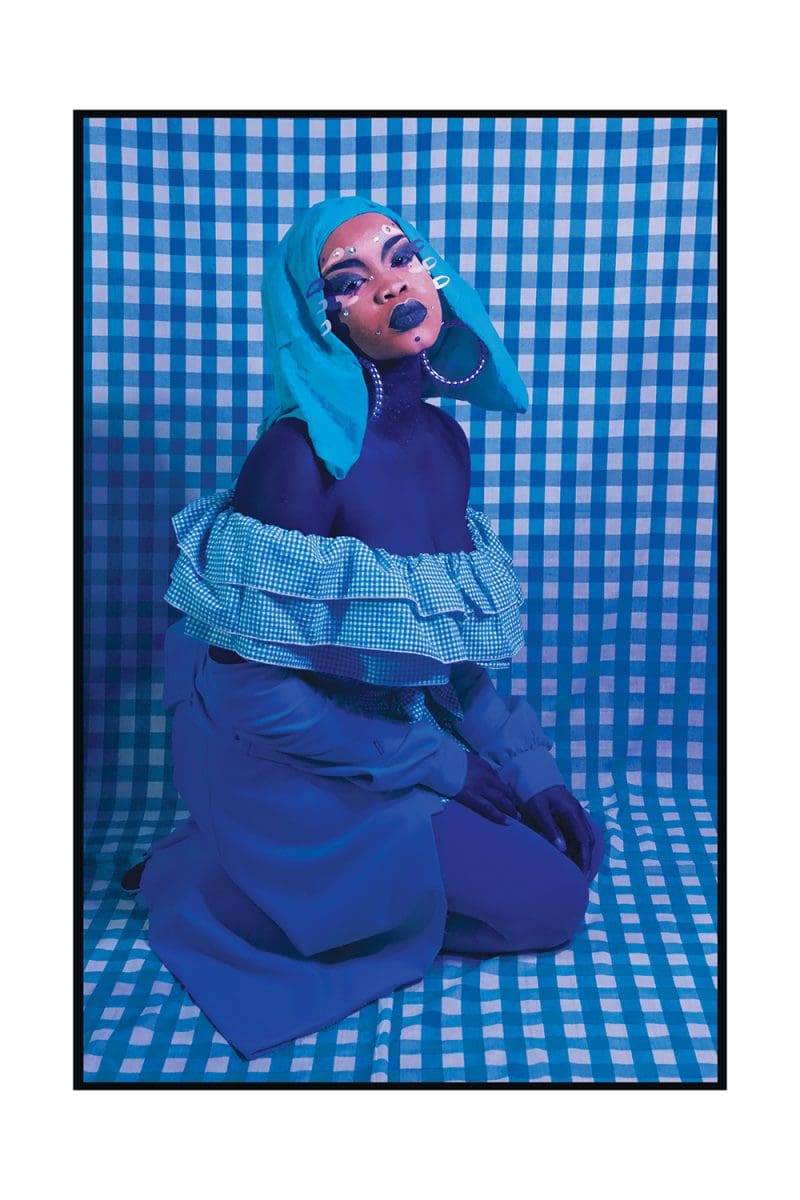
Piercing the veil
A new exhibition at Buxton Contemporary finds a rich complexity in the shadowy terrain between life and death.

Atong Atem, Ego 2, 2019, digital print, 60 x 90 cm, edition of 10 + 2 AP.

Atong Atem, Krown 2, 2019, Illford smooth pearl print, 190.2 x 148 cm, unique edition.

Atong Atem, Zii, 2019, Ilford smooth pearl print, 222 x 148 cm, unique edition.

Atong Atem, Oyem, 2019, Ilford smooth pearl print, 222 x 148 cm, unique edition.

Atong Atem, Self Portrait in Blue, 2018, digital print, 90 x 70 cm, edition of 10 + 2 A/P.

Atong Atem, Self Portrait in Gingham no.2, 2019, digital print, 90.x 70 cm, edition of 10 + 2 A/P.

Atong Atem, Self Portrait With Pearls, 2019, digital print, 90 x 70 cm, edition of 10 + 2 A/P.
Melbourne photographer Atong Atem is known for bright, highly patterned tableaux, shot like traditional studio portraits. In her latest series, Portals, she strips away the colour and presents a more intimate view of her subjects, focusing on the head and shoulders. The commanding works examine the power dynamics embedded in photography, the role of the photographer, and postcolonial and diaspora narratives.
In photographic portraiture, “there will always be some kind of imbalance, even with collaboration,” she says. “I’m interested in how we can challenge the way that power has historically been wielded.”
Atem presents her subjects as though viewed through small portals. In some, these views are distorted—with facial features flipped or assembled in unexpected ways—and these distortions speak to the way that lenses can warp perception.

The move to black and white also intensifies details like clothing and the studio backdrop. There is a sense that her subjects are attempting to present themselves a certain way, or in accordance with certain expectations.
Atem’s practice is deeply engaged with this conflict between public and private spaces and identities. “The way we’re perceived publicly has a great influence on the way we present ourselves, either to confront those perceptions or to shy away from them. I see it a lot in migrant communities and also in people who live ‘on the fringes of society’,” she says. She is interested in the aesthetics of these spaces or, as she says, “the aesthetic of comfort or discomfort, freedom, isolation, assimilation.”
This year, Atem will also exhibit at Melbourne’s Immigration Museum as part of the inaugural PHOTO 2020 festival.
Portals
Atong Atem
MARS Gallery
7 February–7 March
This article was originally published in the January/February 2020 print edition of Art Guide Australia.